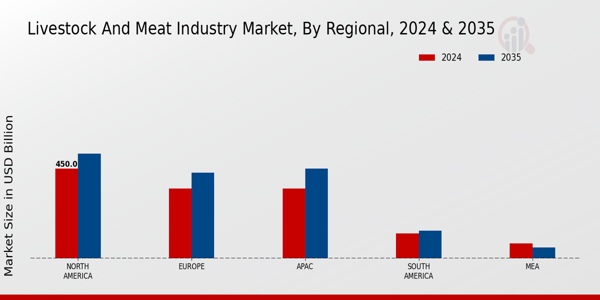The Livestock and Meat Market is a dynamic sector characterized by intense competition among key players striving to secure their position within various geographical regions. Factors such as changes in consumer preferences, the rising demand for sustainable and ethically sourced products, and regulatory pressures significantly influence market dynamics.
The competitive landscape is shaped by established companies that focus on product innovation, quality control, and strategic partnerships. The industry is continuously evolving, driven by technological advancements in breeding, processing, and distribution methods that enhance operational efficiency and meet changing consumer demands. The competitive insights reveal a market where agility, customer satisfaction, and compliance with environmental standards are paramount for success.
In this context, Danish Crown stands out as a prominent player in the Livestock and Meat Market. Renowned for its commitment to sustainability and high-quality meat products, Danish Crown leverages advanced production techniques and stringent quality control processes which strengthen its market presence.
The company benefits from a well-established supply chain, enabling efficient sourcing of raw materials and distribution of products across various regions.
Additionally, the Danish Crown's investments in innovation and research allow it to adapt to changing consumer tastes, particularly in the growing market for organic and free-range meat products. This adaptability and focus on sustainability reinforce the Danish Crown's competitive edge, making it a leader in meeting both market and consumer demands.
NBP Meats has carved a significant niche within the Livestock and Meat Market, focusing extensively on delivering a diverse range of meat products tailored to meet local and international market needs. The company is distinguished by its rigorous quality assurance protocols, ensuring that all products meet or exceed industry standards.
NBP Meats capitalizes on its strong relationships with livestock producers, allowing for a reliable supply of high-quality meat. The company's emphasis on customer service and bespoke product offerings caters to a diverse clientele, enhancing its competitive position.
Moreover, NBP Meats' initiatives aimed at promoting sustainable farming practices align with trends toward environmental sustainability, further solidifying its reputation as a responsible industry player committed to quality and sustainability.























Leave a Comment